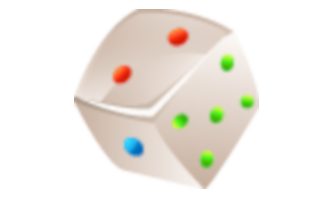Earth in space
Science, Grade 3
Earth in space
Study Guide

Earth in space
Flash Cards

Earth in space
Quiz

Earth in space
Worksheets

Earth in space
Games

Study Guide Earth in space Science, Grade 3
❮
1
/
4
❯
EARTH IN SPACE The Sun, which is a star, is Earth’s source of heat and light. It takes the Earth 24 hours to turn or rotate completely one time. The Earth’s rotation every 24 hours results in day and night on Earth. While the Earth rotates, half of the Earth faces the sun, experiencing day, while the other half is in darkness, experiencing night. The Earth rotates at the very SAME speed every day for each of the 24 hours it takes Earth to rotate once completely. The Earth rotates on its axis. An axis is an imaginary straight line running through the center of the earth, from the North Pole to the South Pole, around which the earth rotates. The Earth also travels in a circle around the Sun. The Earth’s path around the Sun is called its orbit. When is travels around its circle or orbit one time, we all it a revolution. This is how we measure one year. © Copyright NewPath Learning. All Rights Reserved. Permission is granted for the purchaser to print copies for non-commercial educational purposes only. Visit us at www.NewPathLearning.com.
Earth’s Seasons The Earth’s revolutions have to do with its seasons. As the Earth rotates on its axis and circles the sun, different parts of Earth are closer to the Sun than others. How much heat and light we get on planet Earth depends on how close Earth is to the Sun. For example, during winter in the Northern Hemisphere, the Northern Hemisphere is pointing farthest away from the sun. How the Earth is TILTED on its axis and where it is in comparison to the Sun is the reason for the seasons on Earth. The length of daylight on Earth changes during each season. Even though every day is always 24 hours no matter what season it is, winter days have the shortest amount of daylight and the summer days have the longest. Lesson Checkpoint: How long does it take the moon to make one revolution of its orbit? © Copyright NewPath Learning. All Rights Reserved. Permission is granted for the purchaser to print copies for non-commercial educational purposes only. Visit us at www.NewPathLearning.com.
The Moon The moon goes through different phases about every 4 weeks: When the moon is between the Earth and the Sun, the moon looks dark. This phase is called the "new" moon. Waxing means growing. The moon can be described as this when it becomes MORE visible from Earth during certain moon phases. Waning means shrinking. The moon can be described as this when it becomes LESS visible from Earth during certain moon phases. During the waxing crescent phase of the moon, only a sliver of the moon’s surface can be seen from Earth. The first quarter phase of the moon is when the moon looks half full. During the waxing gibbous phase, we see between a half moon and a full moon. © Copyright NewPath Learning. All Rights Reserved. Permission is granted for the purchaser to print copies for non-commercial educational purposes only. Visit us at www.NewPathLearning.com.
It’s time for a FULL moon. When the sun and moon are on opposite sides of the Earth, the moon appears full, because the sun is reflecting its light completely on the half of the moon that we can see on Earth. The moon’s waning gibbous phase comes right after the full moon phase, this is when the moon is between a full moon and a half moon. During the last quarter phase, only one quarter of the moon's surface be seen from Earth. During the moon’s waning crescent phase, only a sliver of the moon’s surface can be seen from Earth. A constellation is a group of stars that make a pattern in the night sky. Lesson Checkpoint: Is a waxing moon growing or shrinking? © Copyright NewPath Learning. All Rights Reserved. Permission is granted for the purchaser to print copies for non-commercial educational purposes only. Visit us at www.NewPathLearning.com.
